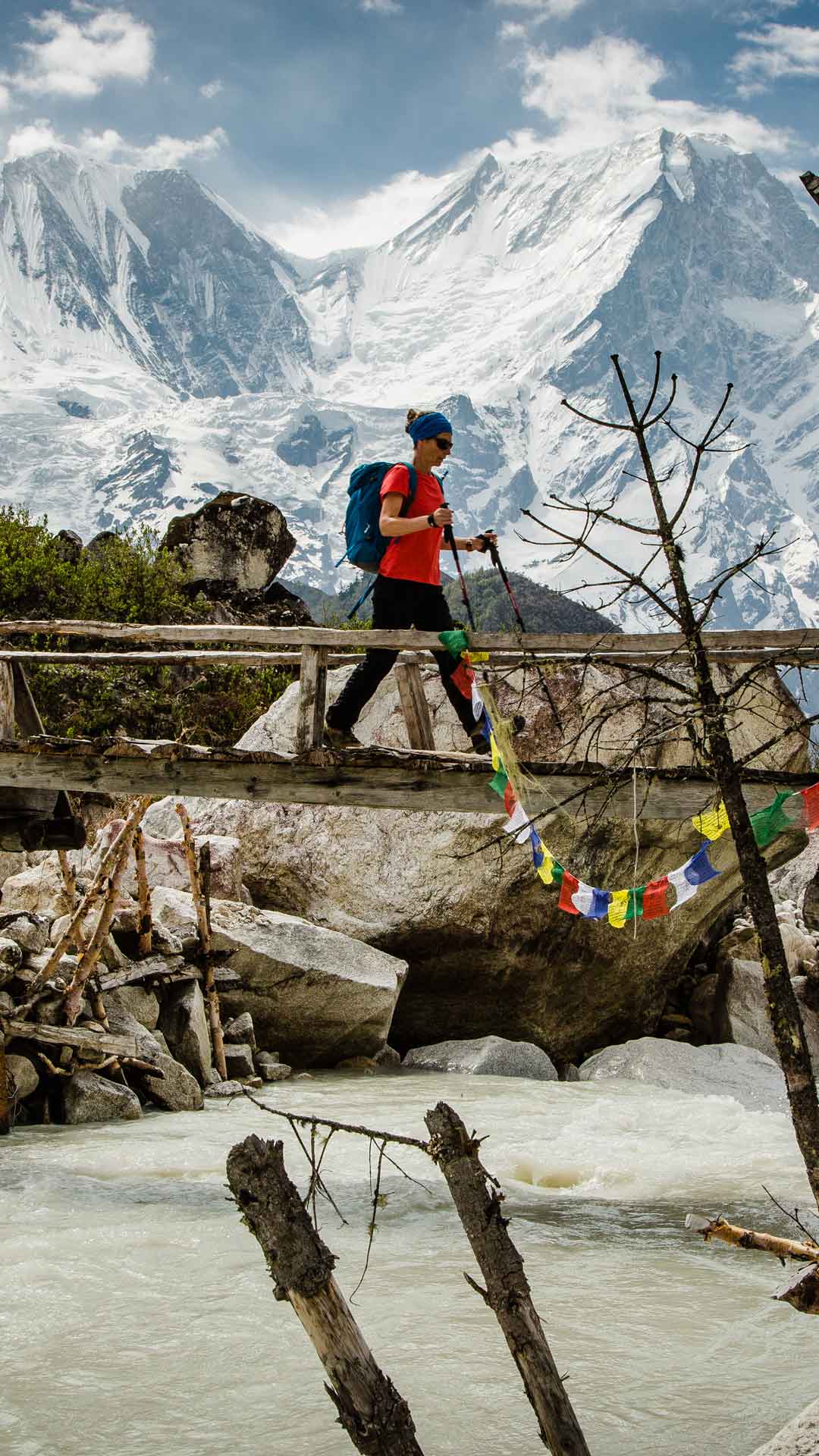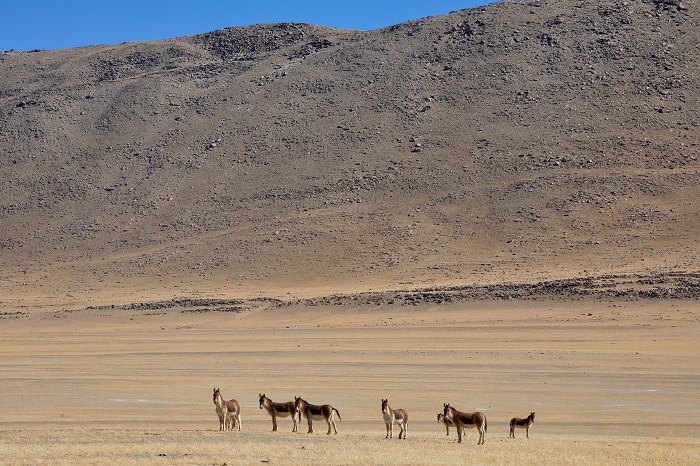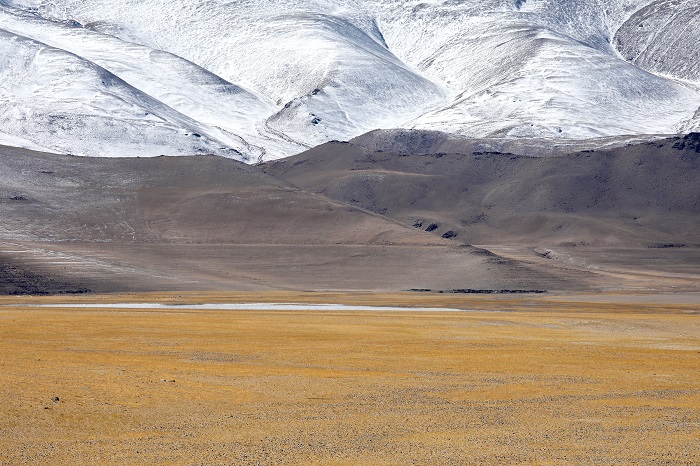Although Nashulai Journeys was born on the grasslands of East Africa our team have spent many years exploring every corner of the Himalaya and South Asia. From Tibet’s Holy Mt Kailash to the tea country of Sri Lanka, via the heights of Mt Everest, the ghats of Varanasi, the chaos of Dhaka, the border lands of Pakistan and Afghanistan and the tiger reserves of central India, we’ve been there. Using our vast experience of the region, which includes the authoring of multiple travel guidebooks, as well as numerous contacts and in-depth knowledge of the culture, history and environment of the region, we are now offering the first in what will be a series of Nashulai Journeys to the Himalaya and South Asia. Just as with our African journeys, our Himalayan and South Asian adventures will stick firmly to the Nashulai goal of putting community and wildlife first, and making sure our journeys are of positive benefit to the people and places that host us. But, of course, we also want to make sure that you – our guests – have a unique and memorable experience. Our Nashulai Journeys to the Himalaya and South Asia go far beyond the normal. Take our first Himalayan journey as an example, a mid-winter adventure in search of the elusive snow leopard in the frozen landscapes of India’s Ladakh region. In the near future we will also be offering Himalayan mountain treks to sacred Buddhist valleys where expert guides will reveal the invisible sacred history of the mountains; thrilling tiger safaris where you will be hosted by respected tiger experts and scientists; community to community multi-day treks through the gorgeous tea country of Sri Lanka, conservation focused tours of Bhutan and epic treks in the shadow of Everest.
Snow Leopards and Frozen Lakes Journey
The only movement and sound is the ruffle of a light breeze on last night’s fresh snow. There are no…
The only movement and sound is the ruffle of a light breeze on last night’s fresh snow. There are no birds. No blooming flowers. No sense of time and space. There is just the cold. It is all encompassing and seems to eat deep into your bones. This landscape is too big. Too daunting. Too powerful. It will be, you conclude, impossible to find what you are looking for in such a vast amphitheatre of frozen rock and ice. But, just as you’re ready to give up and retreat to the warmth of your homestay with its view across the valley to a large Tibetan Buddhist monastery, the guide gasps. “There” he says as he lowers his binoculars and points toward a nearby cliff face, “She’s just over there”. All thoughts of cold immediately retreat from mind. Hurriedly you point your binoculars toward the cliff and there – obvious now you know where to look – is the ghost of the mountains. A female snow leopard basking in the weak winter sunshine. And as you watch there is a movement behind her and two tiny balls of fluff come into focus. Mummy snow leopard has babies.
There is no animal in the Himalaya more iconic than the snow leopard and none that are more elusive (except perhaps the yeti!). For many years the chances of seeing a truly wild snow leopard were considered close to zero. But, in just the past few years, conservationists working in the trans-Himalayan region of Ladakh in northern India have discovered that, if you know where to look and when, the chance of seeing a snow leopard in the wild are actually pretty good. In fact, spend a few days with one of our expert local guides in the mountain valleys of Ladakh and you’d be unlucky not to see one.
For much of the year the snow leopards are high up in the mountains, way beyond the tree line where the air is painfully thin and few of us have the ability to venture. But come winter and the leopards follow their prey down into the lower altitude valleys. And this is when it’s possible to lay eyes on the Ghost of the Himalaya.
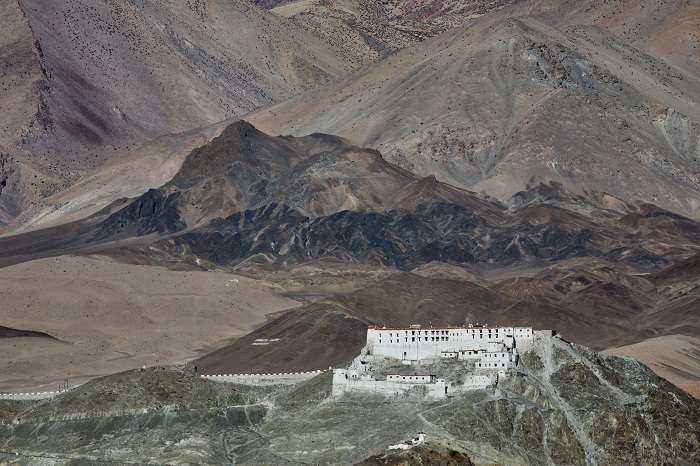 But this adventure doesn’t just focus on snow leopards. We also venture onto the vast, high-altitude Changtang plateau to visit spectacular frozen salt lakes. We will drink yak butter tea with nomads in their felt-hair tents. We will pause at 5000m plus mountain passes festooned in prayer flags. We chat to monks in treasure filled Buddhist monasteries and we hike snowy paths to stunning viewpoints.
But this adventure doesn’t just focus on snow leopards. We also venture onto the vast, high-altitude Changtang plateau to visit spectacular frozen salt lakes. We will drink yak butter tea with nomads in their felt-hair tents. We will pause at 5000m plus mountain passes festooned in prayer flags. We chat to monks in treasure filled Buddhist monasteries and we hike snowy paths to stunning viewpoints.
Ladakh has long been a popular area of India to visit in the summer, but between November and March only the most determined travel to this frozen land, but if temperatures that drop way below zero Celsius don’t put you off, then winter in Ladakh, when the landscape is stripped to essentials, is a truly magical time to visit.
Itinerary

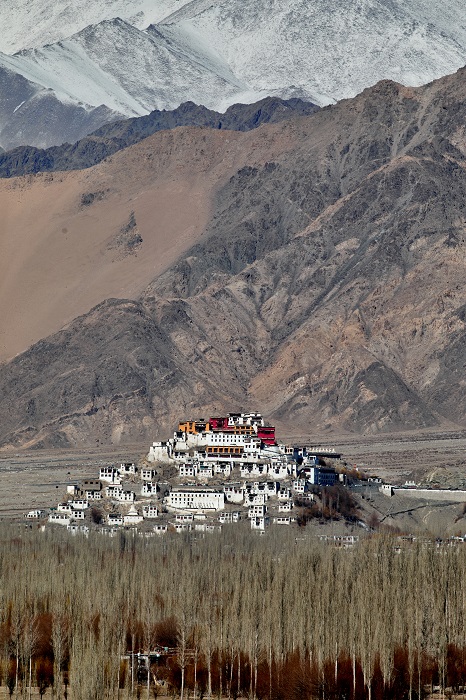
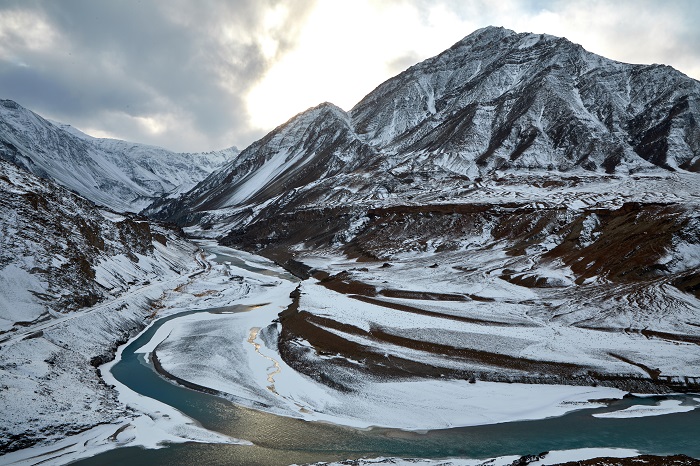


It takes around five hours to drive from Rumbak to Ulley, which is west of Leh. The journey is a non-stop spectacle of high snowy mountains, narrow gorges and rivers filled with blocks of ice. Ulley itself, an old Tibetan-style village of solid farmhouses surrounded by snow-capped peaks and set at the foot of a shaft of rock topped by a massive Buddhist monastery, is a stunning sight. Depending on our arrival time we will either head straight out in search of snow leopards or spend some time exploring the village and visiting the monastery. Our accommodation in Ulley is in a cozy, traditional Tibetan-style homestay.




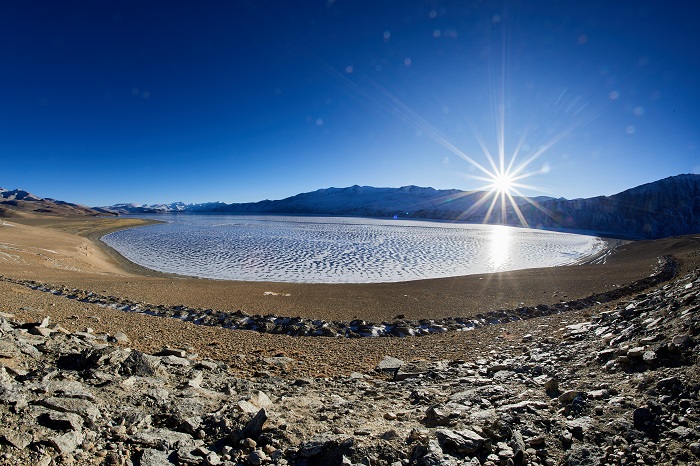
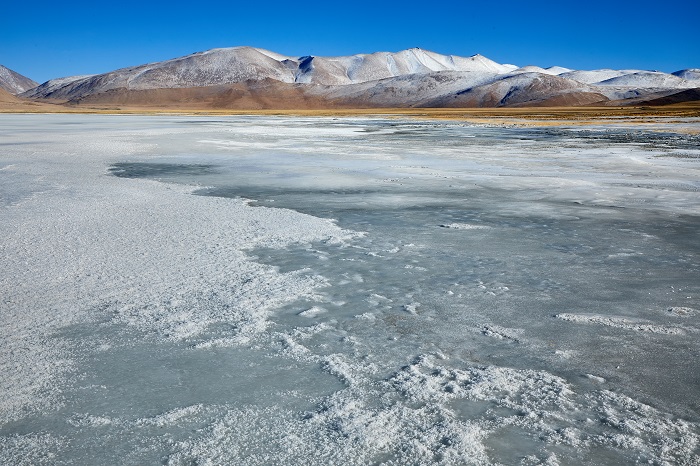

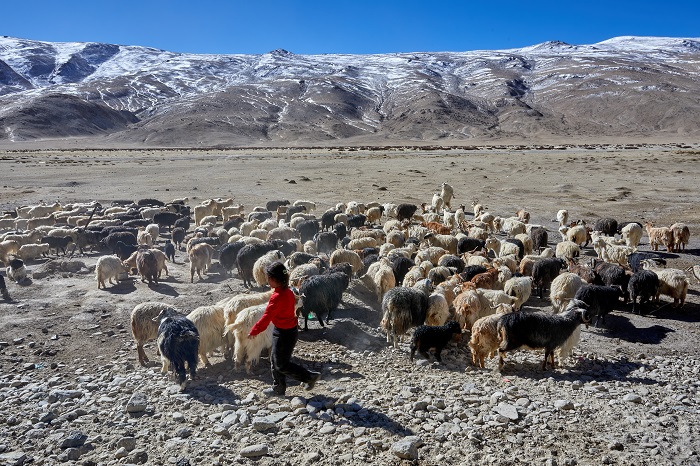
Warning! Cold, Altitude and Snow
Cold
Ladakh lies in the trans-Himalayan region and although it’s politically within India culturally and geologically this is very much a little slice of the vast Tibetan plateau. This means that mid-winter, the only time when you have a realistic chance of seeing snow leopards, is not an easy time of year. Maximum daytime temperatures in the mountain areas where the leopards live frequently drop to around –20°C and below so you do need to be well prepared for severe cold. In the Ladakhi capital of Leh we use a luxury hotel with good heating. Out in the countryside we stay with local Ladakhi families in homestay style accommodation. These are basic but they have heating in common areas and some bedrooms and lots of thick blankets and hot tea is always on offer! Even so, you will need to bring a high-quality winter sleeping bag and suitable winter clothing. We will provide you with a list.
Altitude
This is also an adventure to some of the highest habitable parts of the world and during the course of this safari you will reach altitudes in excess of 4800m. This means that the risk of altitude sickness (AMS) is very real. But, we ensure you have adequate time in the capital Leh to acclimatise before we set out for the mountains and we ensure that we never climb too high in a single day. Our guides are trained to look out for symptoms of AMS and know what to do in the case of someone on the team falling sick with AMS. Because road access to Ladakh is often impossible in winter we fly from Delhi to Leh. Situated at an altitude of 3500m many people suffer mild altitude sickness (headaches and tiredness) on arrival.
Snow
Although the Tibetan plateau is known as the Land of Snows, heavy snow fall is actually quite rare in Ladakh even in the dead of winter. But, it does happen and at such times roads can be temporarily blocked. In general this is never for more than a day, but it does mean that all our itineraries have a certain amount of flexibility and we may not always be able to stick religiously to the itinerary outlined here. On the plus side, fresh snow makes it easier to find leopard footprints and, with luck, the cat itself.

This thirteen day/twelve night safari includes
price does not include
Prices for our Snow Leopards and Frozen Lakes Journey vary depending on the number of people in your group and accommodation level in Leh. Prices for one person travelling alone start at US$3580. Prices based on two people sharing accommodation start at US$5260. Prices based on four people start at US$8190

